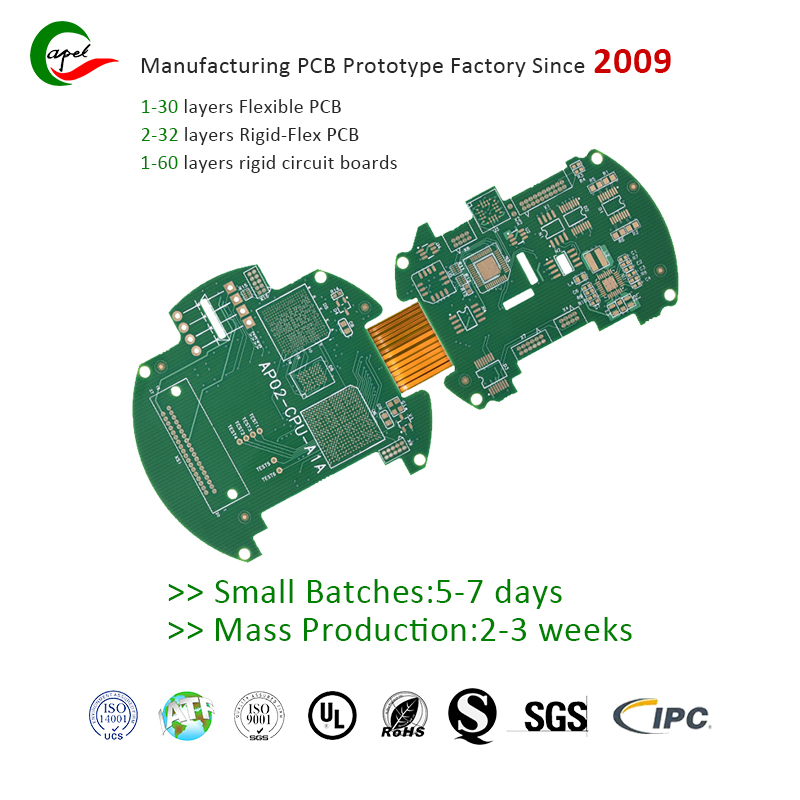Introduction
In this blog post, we’ll explore the versatility of rigid-flex PCBs and dive into the following question: Can I use rigid-flex PCBs for high-speed signal transmission? We’ll discuss the benefits and considerations of utilizing this innovative technology, illuminating its broad applications across multiple industries. So, let’s take a closer look at why rigid-flex PCBs have become a game-changer in high-speed signal transmission.
In today’s rapidly developing technological environment, high-speed signal transmission has become an indispensable aspect in various industries. When it comes to choosing the perfect medium to transmit signals efficiently, rigid-flex PCB is one of the most prominent choices. Rigid-flex PCBs offer a unique combination of flexibility, durability and reliability, making them ideal for applications where space is limited and signal integrity is critical.
Part 1: Understanding rigid-flex PCB
To understand whether rigid-flex PCBs are suitable for high-speed signal transmission, it is important to first understand what they are. Rigid-flex PCB combines the advantages of rigid and flexible circuits, providing a higher degree of design freedom and flexibility than traditional PCBs. By integrating rigid and flexible substrates, designers can take advantage of the unique mechanical and electrical properties of each substrate, resulting in more efficient and reliable solutions.
The combination of rigid and flexible areas within a single PCB allows complex design possibilities, especially in space-constrained applications. Flexible areas allow the PCB to bend and twist while maintaining electronic connections, ensuring robust signal transmission even in complex configurations. This flexibility also eliminates the need for numerous connectors, increasing overall system reliability.
Part 2: Unleashing the Benefits
Now that we have a basic understanding of rigid-flex PCBs, let’s explore the many advantages they offer for high-speed signal transmission:
1. Enhanced signal integrity: Rigid-flex PCBs provide excellent signal integrity by minimizing signal loss, crosstalk, and electromagnetic interference (EMI). The elimination of connectors and reduction of transmission distances help improve signal performance.
2. Space optimization: Rigid-flex boards allow designers to optimize space, making them ideal for compact and miniaturized equipment. Eliminating connectors and the ability to bend and twist the PCB allows for efficient use of available space.
3. Reliability and durability: Rigid-flex boards have high resistance to harsh environments, vibrations and thermal stresses. Its robust construction minimizes the risk of mechanical failure, making it ideal for applications in the automotive, aerospace and medical industries.
4. Rapid assembly and cost-effectiveness: The integration of rigid and flexible circuits simplifies the overall assembly process, reducing production time and costs. Rigid-flex PCBs provide a cost-effective solution by eliminating the need for additional connectors and reducing interconnect complexity.
Part 3: Applications and Precautions
After exploring the advantages of rigid-flex PCBs for high-speed signal transmission, it is important to consider their applications and potential limitations.
1. Aerospace and Defense: Rigid-flex PCBs are widely used in the aerospace industry because they can withstand extreme conditions, meet strict safety standards, and enable precise signal transmission in compact spaces.
2. Medical equipment: In the medical field, rigid-flex boards can be used in devices such as pacemakers, defibrillators, and implantable monitors. Their flexibility and reliability are critical for conforming to irregular shapes while maintaining signal integrity.
3. Consumer electronics: Rigid-flexible PCBs offer a range of possibilities for smartphones, tablets, wearables and other portable devices. Its compact form factor and signal integrity make it the best choice for high-speed data transmission.
Precautions:
- Complex design and manufacturing processes
- Cost impact compared to traditional PCB
- Limited suppliers with expertise in rigid-flex manufacturing
Conclusion
In short, the question “Can I use rigid-flex boards for high-speed signal transmission?” is answered. is a resounding yes. With its advanced design, flexibility and excellent signal performance, rigid-flex boards have revolutionized the way high-speed signals are transmitted in various industries. As technology continues to advance, the demand for compact and reliable solutions continues to grow, making rigid-flex PCBs an increasingly popular choice.
However, when selecting a rigid-flex PCB, it is critical to consider design complexity, manufacturing challenges, and supplier expertise. By partnering with an experienced and trusted manufacturer, engineers can unlock the full potential of this innovative technology and ensure successful high-speed signal transmission.
In summary, employing the versatility of rigid-flexible PCBs to achieve high-speed signal transmission will inevitably lay the foundation for optimized performance, efficient space utilization, and unrivaled reliability in different industries.
Post time: Sep-19-2023
Back







